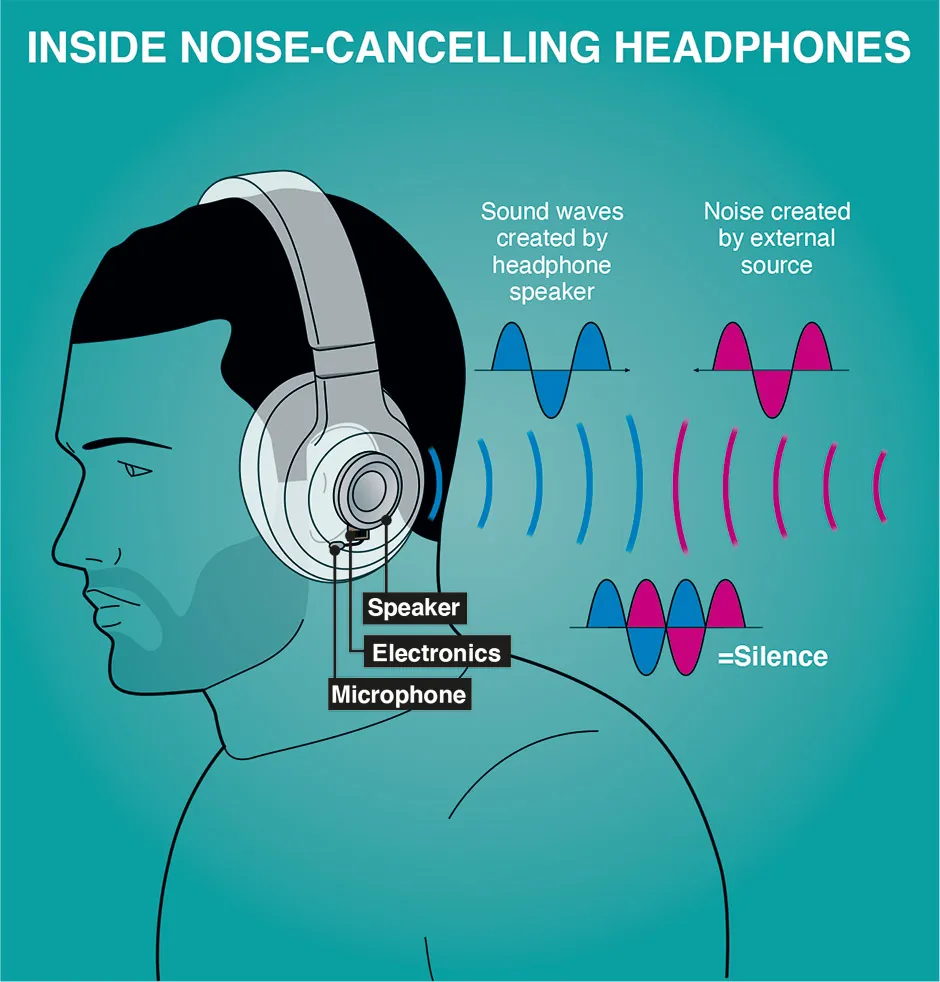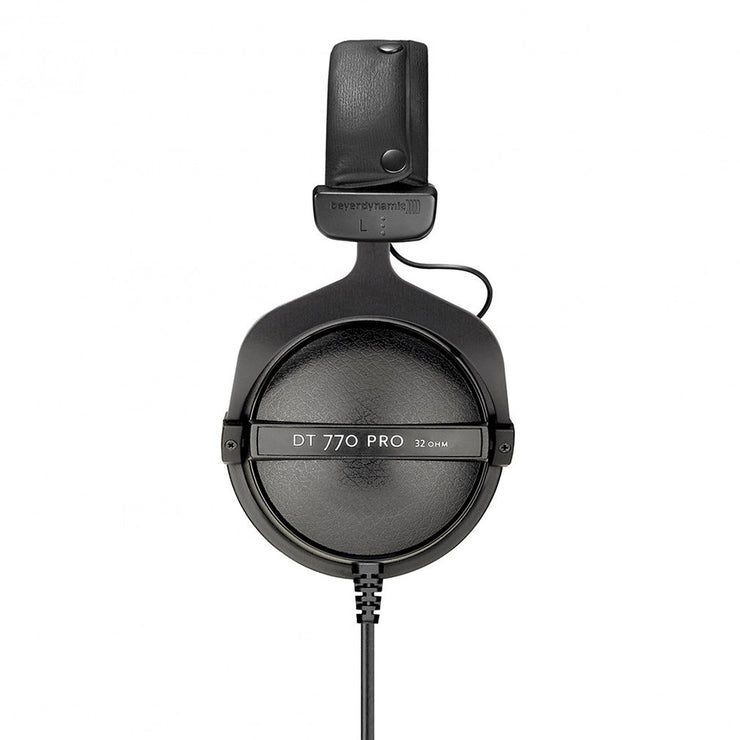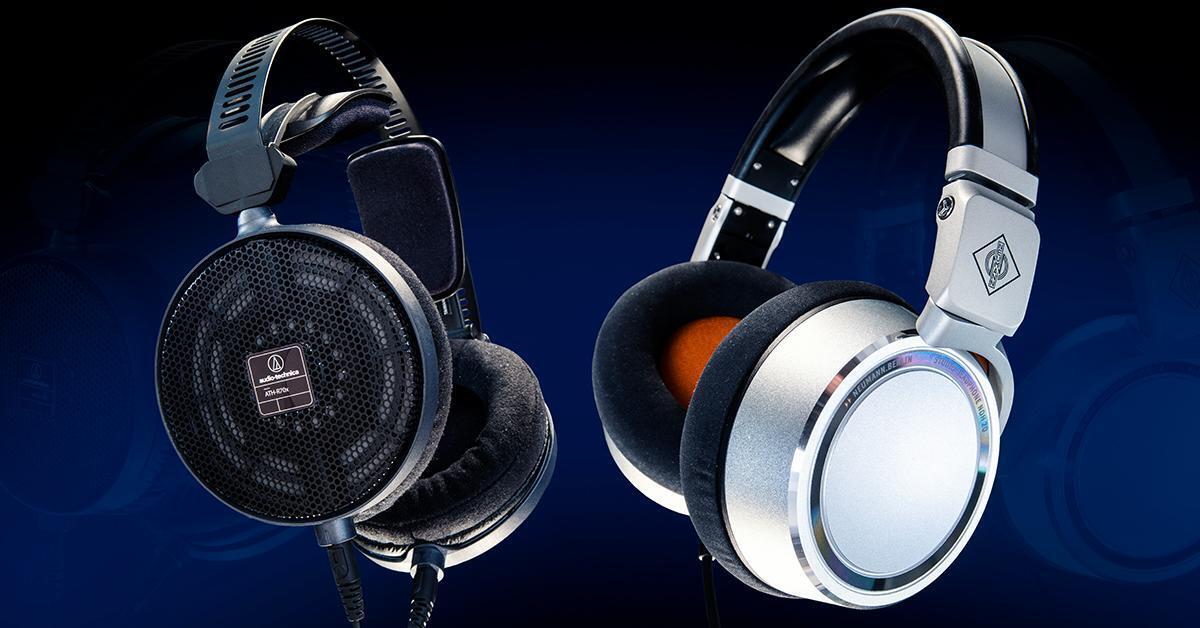When it comes to purchasing Open Back VS Closed Back Headphones, one of the most important decisions to make is whether to go with open back vs closed back headphones. Both types have their own pros and cons, and the choice ultimately depends on your individual needs and preferences. In this article, we will explore the differences between open back and closed back headphones, and help you determine which type of headphones is best for you. Read about the best headphones on the market in Top 7 Studio Monitor Headphones: The Ultimate Guide for Audio Lovers.
Open back headphones are designed with perforated ear cups that allow air and sound to flow freely in and out of the headphones. This design creates a more natural and spacious sound, with a wider soundstage and better instrument separation. However, open back headphones also leak sound, which means that people around you will be able to hear what you’re listening to, and you will be able to hear outside noise.
Closed back headphones, on the other hand, have solid ear cups that block out external noise and prevent sound from leaking out. This design creates a more intimate and immersive sound, with stronger bass and better isolation. However, closed back headphones can also feel more claustrophobic and closed-in, and may lead to ear fatigue over long listening sessions. Check out our favorite closed back headphone model in Audio Technica ATH M50x: A Sweeping Comprehensive Review.
Table of Contents

Understanding Open Back VS Closed Back Headphones
When it comes to choosing headphones, there are two main types to consider: open-back headphones and closed-back headphones. Each type has its own unique characteristics that affect the listening experience.
Open Back Headphones

Used For Critical Listening.
Closed Back Headphones

Ideal For Noisy Environments.
In summary, the choice between open-back and closed-back headphones depends on your personal preferences and intended use. If you value sound quality and have a quiet listening environment, open-back headphones may be the way to go. If you need to block out outside noise and want a more intimate listening experience, closed-back headphones may be the better choice.

Sound Quality Comparison
When it comes to sound quality, both open-back and closed-back headphones have their own strengths and weaknesses. In this section, we’ll compare the sound quality of these two types of headphones based on three key factors: sound stage, bass response, and noise isolation.
Sound Stage
Sound stage refers to the perceived spatial location of sound sources in a recording. Open-back headphones generally have a wider and more natural sound stage compared to closed-back headphones. This is because the open design allows sound to escape from the back of the ear cups, creating a more immersive and natural listening experience. In contrast, closed-back headphones tend to have a more intimate and focused sound stage, which is ideal for critical listening or monitoring.

Bass Response
Bass response is another important factor to consider when comparing open-back and closed-back headphones. Closed-back headphones typically have stronger and more defined bass, thanks to their sealed design that prevents sound from leaking out. However, this can also result in a more boomy or muddy bass that lacks clarity and detail. On the other hand, open-back headphones generally have a more natural and balanced bass response, with better detail and texture.


Noise Isolation
Finally, noise isolation is a crucial factor to consider when choosing between open-back and closed-back headphones. Closed-back headphones provide superior noise isolation, thanks to their sealed design that blocks out external noise. This makes them ideal for use in noisy environments or for private listening. However, this also means that closed-back headphones can be uncomfortable to wear for long periods of time, as they can trap heat and moisture inside the ear cups. In contrast, open-back headphones provide almost no noise isolation, which can be a deal-breaker for some users.

Comfort and Design
When it comes to choosing between open-back and closed-back headphones, comfort and design are important factors to consider. Here, we will discuss the material and build quality of each type of headphone, as well as their wearing comfort.


Important Note


Important Note
In conclusion, when it comes to comfort and design, both open-back and closed-back headphones have their advantages and disadvantages. It’s important to consider your personal preferences and use case when making a decision.
Ideal Usage
When it comes to choosing between open-back and closed-back headphones, the ideal usage depends on the user’s specific needs. Let’s take a closer look at how each type of headphones can be used in different scenarios.


Important Note


Important Note
In summary, choosing between open-back and closed-back headphones depends on the user’s specific needs and preferences. While open-back headphones are generally preferred for professional use and solo at-home listening, closed-back headphones are better suited for noisy environments and casual use in public places.

Frequently Asked Questions
What are the advantages of open-back headphones over closed-back headphones?
Open-back headphones allow air and sound to pass through the back of the ear cups, resulting in a more natural and spacious sound. They also tend to have a wider soundstage, making them ideal for critical listening and audio production. Additionally, open-back headphones are typically more comfortable to wear for extended periods of time, as they do not create a seal around the ear.
Are open-back headphones better for mixing than closed-back headphones?
Open-back headphones are often preferred for mixing and mastering due to their more accurate and natural sound signature. The open-back design allows for a more detailed and spacious sound, making it easier to identify and correct any issues in the mix. However, it is important to note that open-back headphones are not suitable for use in noisy environments, as they do not provide any isolation from external noise.
What are the benefits of closed-back headphones over open-back headphones?
Closed-back headphones provide a more isolated listening experience, as they create a seal around the ear and block out external noise. This makes them ideal for use in noisy environments, such as on a plane or in a busy office. Additionally, closed-back headphones tend to have a more bass-heavy sound signature, which can be desirable for certain genres of music.
Can closed-back headphones block noise better than open-back headphones?
Yes, closed-back headphones are generally better at blocking out external noise than open-back headphones. This is due to the fact that they create a seal around the ear, preventing sound from entering or leaving the ear cups. However, it is important to note that noise isolation can vary depending on the specific model of headphones, and some open-back headphones may provide better isolation than certain closed-back headphones.

Wrap Up
After exploring the differences between open back and closed back headphones, we can conclude that both types have their own set of advantages and disadvantages.
Open back headphones are best suited for critical listening, enjoying high-quality content, and mixing and mastering content. They provide a more natural soundstage and allow for better ventilation, resulting in a more comfortable listening experience. However, they are not suitable for commuting, blocking outside noise, or listening in noisy environments.
On the other hand, closed back headphones are better for blocking outside noise, making them ideal for listening on a commute or in noisy environments. They are also better for use as monitors when recording with microphones. However, they may not provide the same natural soundstage as open back headphones and can cause discomfort during long listening sessions due to the lack of ventilation.
Ultimately, the choice between open back and closed back headphones depends on personal preference and the intended use. If you are looking for a more natural soundstage and comfortable listening experience, open back headphones may be the better choice. If you need to block outside noise or listen in noisy environments, closed back headphones may be the better option.
It’s important to consider your own needs and preferences when choosing between open back and closed back headphones. We hope this article has provided you with the information you need to make an informed decision.




